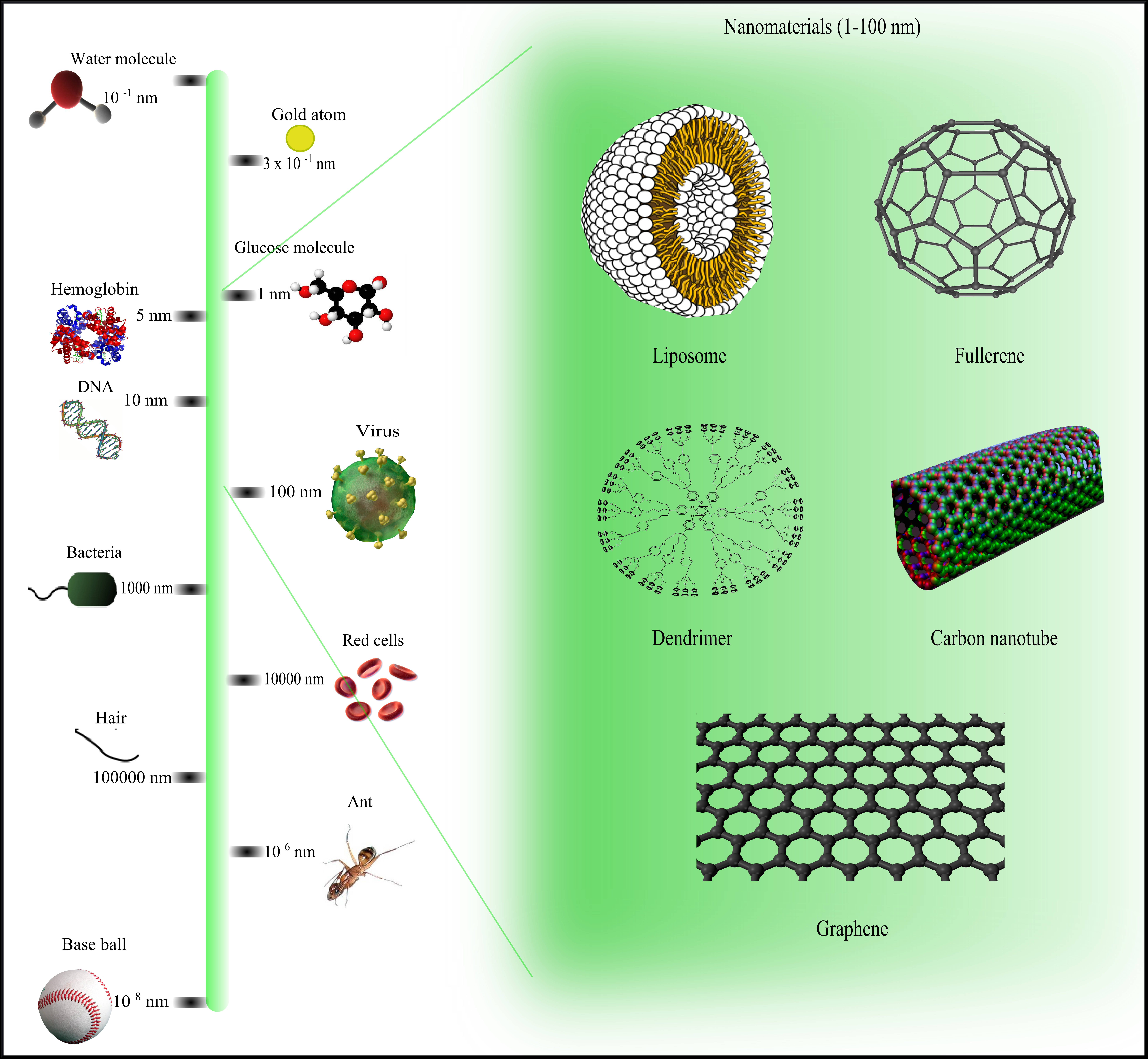Materials Engineering: Mysteries of Nanotechnology and Smart Materials
 Materials engineering is a multidisciplinary field that focuses on the design, development, and characterization of materials for various applications. It encompasses a wide range of materials, including metals, ceramics, polymers, and composites, and plays a crucial role in numerous industries such as aerospace, automotive, electronics, healthcare, and energy.
Materials engineering is a multidisciplinary field that focuses on the design, development, and characterization of materials for various applications. It encompasses a wide range of materials, including metals, ceramics, polymers, and composites, and plays a crucial role in numerous industries such as aerospace, automotive, electronics, healthcare, and energy.
In recent years, two areas within materials engineering have gained significant attention for their potential to revolutionise the field: nanotechnology and smart materials.
Nanotechnology involves manipulating materials at the nanoscale, where unique properties and behaviours emerge due to quantum effects and surface phenomena. Smart materials, on the other hand, have the ability to respond to external stimuli by changing their properties, leading to applications in sensing, actuation, and self-repair.
Understanding Nanotechnology
Nanotechnology involves the fabrication, manipulation, and characterization of materials and devices at the nanoscale, typically ranging from 1 to 100 nanometers. At this scale, materials exhibit novel physical, chemical, and mechanical properties that differ from their bulk counterparts. These properties arise due to quantum confinement, increased surface area, and size-dependent phenomena.
One of the key applications of nanotechnology is the development of nanomaterials, which are materials with at least one dimension in the nanoscale range. Examples include carbon nanotubes, graphene, quantum dots, and nanoparticles. These materials exhibit unique properties such as high strength, conductivity, catalytic activity, and optical properties, making them suitable for a wide range of applications.
For instance, carbon nanotubes are cylindrical structures composed of rolled-up graphene sheets, offering exceptional mechanical strength, thermal conductivity, and electrical conductivity. They have been used in various applications, including nanocomposites, electronics, sensors, and energy storage devices.
Another example is quantum dots, which are semiconductor nanoparticles with tunable optical properties. Due to their size-dependent bandgap, quantum dots exhibit size-tunable fluorescence, making them ideal for applications in displays, lighting, solar cells, and bioimaging.
In addition to nanomaterials, nanotechnology also encompasses nanoelectronics, nanophotonics, nanomedicine, and nanomanufacturing. These areas leverage the unique properties of nanoscale materials and devices to develop innovative solutions for challenges in electronics, healthcare, energy, and environmental sustainability.
Exploring Smart Materials
Smart materials, also known as responsive or adaptive materials, are a class of materials that can respond to external stimuli by changing their properties. These stimuli can include temperature, light, moisture, pH, magnetic fields, electric fields, and mechanical stress. Smart materials exhibit reversible or irreversible changes in properties such as shape, colour, stiffness, conductivity, and permeability in response to these stimuli.
One of the most well-known examples of smart materials is shape memory alloys (SMAs), which can “remember” and recover their original shape upon heating or deformation. SMAs are composed of metallic alloys such as nickel-titanium (Nitinol) or copper-aluminium-nickel, which undergo a reversible phase transformation between austenite and martensite phases. This unique property makes SMAs suitable for applications such as actuators, sensors, medical devices, and aerospace components.
Another example of smart materials is electrochromic materials, which can change colour in response to an electric field. These materials are used in smart windows, rearview mirrors, and displays, where transparency or opacity can be controlled dynamically to regulate light and heat transmission.
Self-healing materials are another category of smart materials that have the ability to repair damage autonomously. These materials can recover their mechanical integrity and functionality after experiencing mechanical or thermal damage, prolonging their service life and reducing maintenance costs. Self-healing polymers, metals, ceramics, and composites have been developed for various applications, including coatings, adhesives, seals, and structural materials.
Applications and Challenges
The combination of nanotechnology and smart materials has led to a wide range of applications in fields such as electronics, healthcare, energy, aerospace, automotive, textiles, construction, and environmental remediation. These applications include but are not limited to:
- Nanoelectronics: High-performance transistors, memory devices, sensors, and quantum computing.
- Nanomedicine: Targeted drug delivery, imaging agents, diagnostics, regenerative medicine, and therapeutics.
- Energy: High-efficiency solar cells, fuel cells, batteries, supercapacitors, thermoelectric devices, and energy harvesting systems.
- Aerospace: Lightweight composites, multifunctional materials, thermal protection systems, and structural health monitoring.
- Automotive: Lightweight materials, crash-resistant structures, smart sensors, and self-healing coatings.
- Textiles: Wearable electronics, smart fabrics, antimicrobial coatings, and UV-blocking materials.
- Construction: Self-cleaning surfaces, energy-efficient materials, smart sensors, and self-healing concrete.
Despite the promising potential of nanotechnology and smart materials, there are several challenges that need to be addressed to realise their full benefits. These challenges include scalability, reproducibility, reliability, toxicity, environmental impact, cost-effectiveness, regulatory approval, and ethical considerations. Researchers and engineers are actively working to overcome these challenges through interdisciplinary collaborations, advanced fabrication techniques, computational modelling, characterization methods, standardisation efforts, and technology transfer initiatives.
Future Prospects
In conclusion, nanotechnology and smart materials represent two exciting frontiers in materials engineering, offering unprecedented opportunities for innovation and advancement across diverse applications. As our understanding of nanoscale phenomena and responsive materials continues to deepen, we can expect to see even more groundbreaking developments in the years to come.
These developments have the potential to revolutionise industries, improve quality of life, and address global challenges in areas such as healthcare, energy, environment, and sustainability. By unravelling the mysteries of nanotechnology and smart materials, engineers are shaping the future of technology and driving progress toward a more sustainable and interconnected world.




